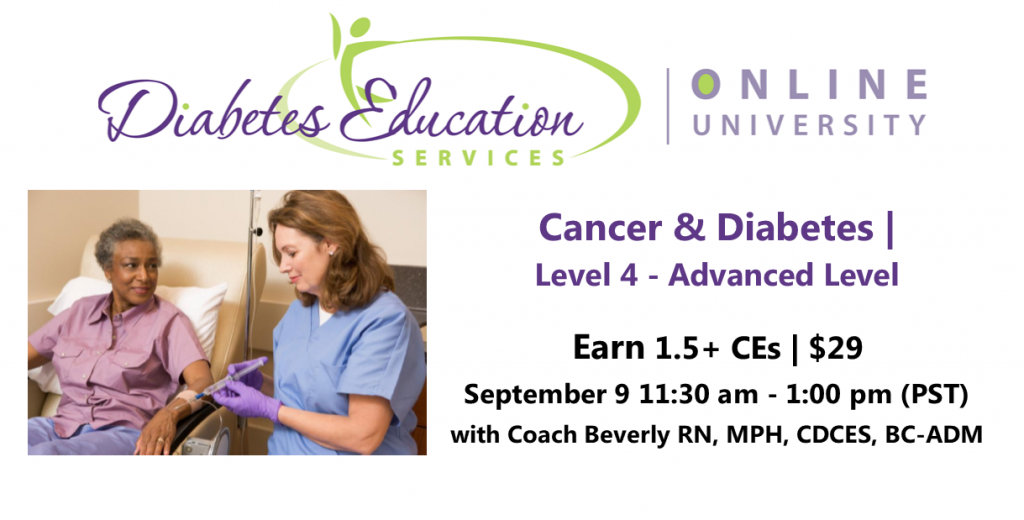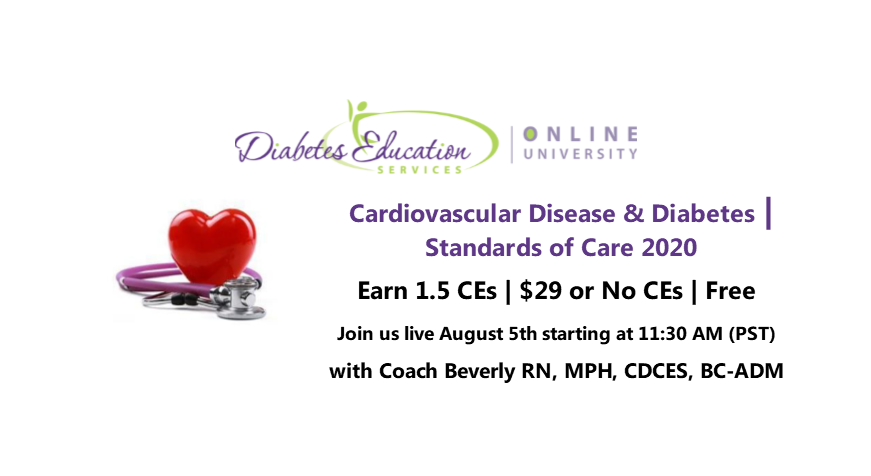Confessions of an RD Sugar Addict & Low-Sugar Recipes
The holidays are upon us in the midst of a pandemic.
In past holiday seasons, I would check in with my clients to see how the holiday season was affecting their health. We would talk about getting enough sleep and adapting exercise routines to adjust for cold weather and shorter days.

We would talk about stress management tools to help cope with the pressures to overeat and the pressures to eat foods that we have been attempting to avoid.
This year is challenging because we are already taxed by the unbelievable stress of living in a pandemic.
I have found that I am already struggling with insomnia and less exercise. I have been overeating and craving sweets. In fact, I think that I have developed a sugar addiction during these last 7 months. I have been substituting ice cream, donuts, and chocolate for the hugs that I used to take for granted. I am missing gatherings, parties, and shared dinners with friends.
I started to look at the total amount of free sugar that I was consuming. On some days it added up to over 12 teaspoons per day! And I am a dietitian.
Sugar is a powerful stimulant of serotonin that is lacking in my brain these days. I thought that I was developing a cavity and this woke me up.
I had to make a commitment to cut back on sugar.
I thought about the World Health Organization’s sugar recommendation of lowering our free sugar intake to less than 5% of our total daily calories. This works out to about 6 teaspoons a day, depending on the person.
Free sugar applies to
- Added sugars such as:
- glucose
- fructose
- sucrose
- Naturally occurring sugars such as in:
- fruit juice
- honey
- syrups
Whole fruit and milk sugar are not included in free sugar.
I started to look at the total amount of free sugar that I was consuming. On some days it added up to over 12 teaspoons per day! And I am a dietitian.
The average American consumes 17 teaspoons of sugar daily. This translates to 57 pounds of sugar consumed each year.
Hidden Sugars are Tricky to Find
Many people don’t realize that a lot of the sugar they take in are “hidden” in processed foods, according to the World Health Organization.
- 12 oz of soda may contain up to 10 teaspoons of sugar.
- Starbuck’s 12 oz Vanilla Latte contains about 7 teaspoons of sugar.
- 1 Tablespoon of ketchup contains 1 teaspoon of sugar.
- Fun size trick or treat plain M & M’s contain 3 teaspoons of sugar.
- 1 piece of apple pie contains up to 8 teaspoons of sugar.
- 6 oz of fruit-flavored yogurt has 6 teaspoons of sugar.

Research does show that for some people eating sugar produces characteristics of craving and withdrawal, along with chemical changes in the brain’s reward center, the limbic region. These changes are linked to a heightened craving for more sugar.
I am grateful to be able to consciously choose to lower my sugar intake to improve my health.
I am grateful that the whole fruit can be used as a sweet substitute for my sugar cravings.
I love the new fall crop of apples, pears, kiwi, and persimmons.
Delicious Naturally Sweet Recipes
Below are my recipes for baked apples and poached pears that are a delicious holiday dessert.
Simple Baked Apples
- 5 – 6 medium apples, peeled and cut into chunks
- 2 Tablespoons butter or coconut oil, melted
- 1 teaspoon cinnamon
- ½ cup chopped walnuts
- Preheat the oven to 350 degrees
- Place the apples in a medium baking dish
Mix the melted butter or coconut oil, walnuts, and cinnamon together and pour over the apples. Bake in the preheated oven until the apples are soft, about 20 – 30 minutes. Stir once during the baking.
Enjoy!
Poached Pears (Naturally Sugar-Free)

- 1 cup red wine
- 1 orange zest and juice
- 1 cinnamon stick
- 1-inch ginger root peeled
- 3 cloves whole
- 2 Conference pears, peeled, sliced in half, and core
- 1 Tablespoon sliced toasted almonds
- 2 Tablespoons thick plain Greek yogurt
Pour the wine into a small saucepan along with the orange zest and juice and all of the spices
Bring almost to a boil and add the pear halves. Turn down the heat and let the pears simmer gently for 20 – 30 minutes, or until they have slightly softened. Carefully turn the pears over a few times throughout the cooking time to ensure they color evenly. When the pears are cooked remove them from the wine and place them on plates. Add a tablespoon of yogurt to each plate and sprinkle with toasted almonds.
Visit our Joy of 6 Page for sugar info and resources to share with your clients!
Written by Dawn DeSoto RD, CDCES, our resident Nutrition Content Writer
Pumpkin Pie Recipe – Finding Joy in Food during the Pandemic
This time of year is my favorite. Seeing the beautiful colors of the fall harvest soothes and invigorates me. Being outdoors with my community is especially healing during this unusual and stressful time of isolation due to the pandemic.

I especially adore shopping and gathering fresh produce and other goodies from our local Farmers’ Market!
The farmer’s market is also a special place for me because my daughter works there. Her booth is overflowing with all the pumpkins and winter squash they have harvested. Last week, at the market, my daughter introduced me to her friend as they were talking about a pumpkin pie he had made from the pumpkin that he had purchased from her.
“Unfortunately, I can’t eat the pumpkin pie anymore because I was just diagnosed with having Type-2 Diabetes,” he explained.
I couldn’t help but tell him that I was a Dietitian and Diabetes Specialist.
We started talking about modifying the recipe using sugar substitutes or low carbohydrate crusts. We discussed portion control and going for a walk after eating a piece of the pie. He was intrigued.
My philosophy is that, with thoughtfulness and creativity, all of our favorite foods can be included in our meal plans with knowledge and love.
Pumpkin and other winter squash do contain carbohydrates but are nourishing food. Benefits include:
- They are high in fiber, beta-carotene, magnesium, potassium, lutein, and zeaxanthin.
- 1 cup of pumpkin puree has 80 calories, 22 gms carbohydrate, 6 gms of fiber.
- A piece (1/8 of a 9-inch pie) of traditional pumpkin pie made with sweetened condensed milk contains 379 kcal and 31 gms of carbohydrate or
- Compared to the included recipe (see below) of a piece of stevia-sweetened pumpkin pie (1/6 of a 9-inch pie) made with low fat evaporated milk and stevia containing 188 calories and 17 gms of carbohydrate. Both can be included in our meal plans if desired.
It is important to take away the judgment around food choices, to encourage thoughtful choices, and find joy in our food. At this difficult time, every effort to empower ourselves with choice and joy is highly recommended.
Stevia Pumpkin Puree Recipe (Serves 6):
Choose a pie pumpkin and wash it’s exterior. Cut in half lengthwise and remove the seeds and pulp. Roast in your oven for about 45 minutes at 350 degrees F.
Simply peel away the skin from the flesh and toss the pumpkin pulp into your food processor or blender.
Ingredients:
- 1 unbaked 9-inch pie crust
- ½ teaspoon stevia powder
- 1 teaspoon cinnamon
- ½ teaspoon ginger
- ½ teaspoon nutmeg
- ¼ teaspoon salt
- 2 eggs
- 1 ¾ cups pumpkin puree
- 1 cup low-fat evaporated milk.
In a large bowl, whisk eggs and pumpkin puree together. Add the rest of the ingredients and whisk together while slowly pouring in the evaporated milk.
Pour mixture into pie crust.Bake in the oven for 20 minutes at 390 degrees, reduce oven to 350 degrees and bake for another 45 – 60 minutes until inserted toothpick comes out clean. Store in the refrigerator overnight.
Written by Dawn DeSoto RD, CDCES, our resident Nutrition Content Writer
Dawn Desoto, Nutrition Content Writer

Meet Dawn Desoto, our resident Nutrition content expert. Dawn has specialized in diabetes care for over twenty years.
As a diabetes specialist, Dawn provides individual and group coaching. Dawn launched a Diabetes Prevention Program in her community and provided plant-based cooking classes coupled with take-home recipes. The participants loved the helpful, delicious, easy-to-understand food demonstrations and recipes. But, a big motivation to keep coming to classes, was the fact that they felt celebrated and supported by the kind wisdom of Dawn’s approach.
In addition to her diabetes and nutrition expertise, Dawn loves to garden, cook, swim, bike and hike with her son and daughter. She also enjoys reading, traveling, and star gazing!
Please join me in welcoming my friend and colleague, Dawn Desoto, RD, CDCES
Subway’s “Bread” isn’t Bread in Ireland

Ireland’s Supreme Court announced that Subway’s sandwich “bread” cannot be legally labeled as bread.
After a Subway franchise in Ireland attempted to claim tax breaks for some of their items on the menu, a ruling was made that the bread Subway uses isn’t bread but more of a confectionary baked good.
“Subway’s bread is, of course, bread. We have been baking fresh bread in our restaurants for more than three decades and our guests return each day for sandwiches made on bread that smells as good as it tastes,” a Subway spokesperson said in a statement. The company says it’s reviewing the ruling.
Subway’s bread recipe has 10% of sugar to the weight of flour, which means their bread cannot be considered a staple food of bread and therefore ineligible for tax breaks.
This decision is in accordance with the Value-Added Tax Act of 1972 which states that “tax-exempt bread can’t have sugar, fat and bread improver exceed 2% of the weight of flour.”
This isn’t the first time Subway’s bread recipe has been questioned. In 2014 a petition went viral to remove azodicarbonamide, a chemical found in shoe rubber and items like yoga mats.
Overall, Subway, often revered as one of the healthier fast food options, may need to reevaluate its bread recipe and consider decreasing added sugar content.
To read more, click here.
Sign up for Diabetes Blog Bytes – we post one daily Blog Byte from Monday to Friday. And of course, Tuesday is our Question of the Week. It’s Informative and FREE! Sign up below!
[yikes-mailchimp form=”1″]Accreditation: Diabetes Education Services is an approved provider by the California Board of Registered Nursing, Provider 12640, and Commission on Dietetic Registration (CDR), Provider DI002. Since these programs are approved by the CDR it satisfies the CE requirements for the CDCES regardless of your profession.*
The use of DES products does not guarantee the successful passage of the CDCES exam. CBDCE does not endorse any preparatory or review materials for the CDCES exam, except for those published by CBDCE.
Liver Disease and Diabetes – Should We be Screening?
Over 50% of people living with diabetes have fatty liver disease.
Over the next 20 years, non-alcoholic steatohepatitis (NASH) and type 2 diabetes will account for 65,000 transplants, 1.37 million cardiovascular-related deaths, and 812,000 liver-related deaths.
These statistics are from a 2020 article in Diabetes Care, Economic and Clinical Burden of Non-alcoholic Steatohepatitis in Patients With Type 2 Diabetes in the U.S.
Relationship between Type 2 and Fatty Liver Disease
Fatty liver disease is increasingly recognized as the hepatic manifestation of metabolic syndrome. Currently, there is no effective approved medical therapy to fix the fatty liver disease, management depends on lifestyle changes, such as weight loss and increased exercise.
Type 2 and Liver Disease Stats
About 34 million people in the U.S. have type 2 diabetes. Of those, over half are also living with liver disease.
In the U.S. in 2019:
- About 50% (18.2 million people) are living with Type 2 diabetes plus Non-alcoholic fatty liver disease (NAFLD).
- Of those, 37% (6.4 million) have a more severe form of liver disease known as non-alcoholic steatohepatitis (NASH).
- Advanced fibrosis among biopsied people with NAFLD and T2DM was 17.02%
- Twenty-year costs for NAFLD in these patients were $55.8 billion.
Should We Screen People with Diabetes for Liver Disease?
Given the high rate of liver disease in people with diabetes, I have been paying more attention to our client’s liver enzymes levels, including alanine aminotransferase (ALT) or aspartate aminotransferase (AST). Elevated levels of these liver enzymes indicate inflammation and a potential pathway to liver disease progression.
After discovering elevated enzymes, we send them for further diagnostic testing to evaluate the extent of liver disease. The question is, should we make liver health screening a part of our usual diabetes practice?

Is screening cost-effective and what are the next steps?
According to a recent article in Gastroenterology, screening for non-alcoholic fatty liver disease (NAFLD) followed by lifestyle modification among people with type 2 diabetes can be cost effective.
In a recent study, a team of researchers used a hypothetical cohort of people age 55 years with type 2 diabetes and developed a model that compared screening and treatment with no such protocol.
For the virtual intervention group, they measured ALT or AST and provided an ultrasound scan. If these tests came back positive for NAFLD, the participants underwent further screening with liver biopsies and transient elastography.
People found to have NASH with Stage 2 entered a year-long behavior program to help them with weight loss and lifestyle changes. They found the for participants with stage 2 fibrosis or higher, the screening and lifestyle intervention was just as cost-effective compared to the group with no screening.
“Our results indicate the potential value and cost-effectiveness of NAFLD screening” in people with type 2 diabetes, wrote the study authors. “Given the increasing burden of NAFLD/NASH and the expected rapid increase in approved medications, we recommend screening patients with type 2 diabetes for NAFLD.”
Click this link to read more about Screening People with Type 2 for Liver Disease.
Upcoming Cancer & Diabetes Webinar | Level 4 – Advanced Level | 1.5 CEs
Join us live on September 9th at 11:30 AM (PST)

People with cancer often experience hyperglycemia secondary to treatment, which can increase risk of infection and compromise their nutritional status. In addition, recent research has identified the link between diabetes and cancer. Join us to learn more about this unexpected link and treatment strategies for steroid-induced hyperglycemia using a case study approach.
Topics Include:
- Discuss the relationship between cancer, hyperglycemia and insulin resistance.
- State 3 benefits of normalizing glucose levels during chemotherapy.
- Using a case study approach, discuss strategies to improve glucose levels and quality of life.
Sign up for Diabetes Blog Bytes – we post one daily Blog Byte from Monday to Friday. And of course, Tuesday is our Question of the Week. It’s Informative and FREE! Sign up below!
[yikes-mailchimp form=”1″]Accreditation: Diabetes Education Services is an approved provider by the California Board of Registered Nursing, Provider 12640, and Commission on Dietetic Registration (CDR), Provider DI002. Since these programs are approved by the CDR it satisfies the CE requirements for the CDCES regardless of your profession.*
The use of DES products does not guarantee the successful passage of the CDCES exam. CBDCE does not endorse any preparatory or review materials for the CDCES exam, except for those published by CBDCE.
[yikes-mailchimp form=”1″]Food Insecurity Risk Rising for people with Diabetes
Food insecurity in the United States has doubled over the past 20 years.

Food insecurity “exists whenever the availability of nutritionally adequate and safe foods or the ability to acquire acceptable foods in socially acceptable ways is limited or uncertain” as defined by S. A. Anderson.
According to a recent study published by JAMA Network:
- In 2015-16: 18% of adults surveyed reported food insecurity
- In 1999-200 only 9% of adults reported food insecurity.
Food deserts, socioeconomic status, ability, and other factors impact one’s access to nutritionally healthy foods.
Food Insecurity & Diabetes
“Food insecurity in North America is consistently more prevalent among households with a person living with diabetes, and similarly, diabetes is also more prevalent in food-insecure households,” states Enza Gucciardi in “The Intersection between Food Insecurity and Diabetes.”
For people living with diabetes who experience food insecurity, adhering to diabetes self-management (DSM) regimens can be more challenging.
Often this can put a person living with diabetes in a situation in which they have to decide between healthy foods, prescriptions, or other expenses.
As Diabetes Specialists, we can create person-centered, realistic plans that are coupled with accessible resources to better support those living with diabetes.
The USDA has created a list of Food Assistance programs that may be able to help those experiencing food insecurity.
Written by Bryanna, our Director of Operations & Customer Happiness
For more information on the JAMA published study click here. Additionally, read more from “The Intersection between Food Insecurity and Diabetes” by clicking here.
Sign up for Diabetes Blog Bytes – we post one daily Blog Byte from Monday to Friday. And of course, Tuesday is our Question of the Week. It’s Informative and FREE! Sign up below!
[yikes-mailchimp form=”1″]Accreditation: Diabetes Education Services is an approved provider by the California Board of Registered Nursing, Provider 12640, and Commission on Dietetic Registration (CDR), Provider DI002. Since these programs are approved by the CDR it satisfies the CE requirements for the CDCES regardless of your profession.*
The use of DES products does not guarantee the successful passage of the CDCES exam. CBDCE does not endorse any preparatory or review materials for the CDCES exam, except for those published by CBDCE.
Cinnamon & Prediabetes – Does it help?
Can cinnamon help maintain glucose in those with prediabetes?

There have been several studies over the past decade to determine the efficacy of using cinnamon supplements to regulate blood sugars. Most of the studies found either no significant change or slight changes.
For example, a 2013 study of 70 different participants found that those who took 1 gram of cinnamon daily showed no significant changes over 30 or 60 days.
However, a recent study found that cinnamon supplements may be beneficial over time for improving glucose homeostasis in prediabetes.
This study, conducted by Giulio R. Romeo, MD, from the Joslin Diabetes Center in Boston, and Dr. Romeo’s colleagues spanned over 12 weeks across 45 participants who met the criteria for prediabetes. These participants, who were not taking a placebo, took 500mg of cinnamon supplements a day to see the impact on glucose control.
The Results
From a similar baseline, FPG rose after 12 weeks with placebo but remained stable with cinnamon, leading to a mean between-group difference of 5 mg/dL (P<0.05). When compared to the respective baseline, cinnamon, but not placebo, resulted in a significant decrease of the AUC PG (P<0.001) and of the 2-hr PG of the OGTT (P<0.05). There were no serious adverse events in either study group.
Their study found that fasting plasma glucose (FPG) rose for those who took the placebo. For those who took cinnamon supplements, their area over the curve (AUC) plasma glucose (PG) decreased along with their 2 hour PG by oral glucose tolerance test (OGTT).
The results suggest that over time, a cinnamon supplement of 500mg a day may help blood glucose levels for those with prediabetes.
Sign up for Diabetes Blog Bytes – we post one daily Blog Byte from Monday to Friday. And of course, Tuesday is our Question of the Week. It’s Informative and FREE! Sign up below!
[yikes-mailchimp form=”1″]Accreditation: Diabetes Education Services is an approved provider by the California Board of Registered Nursing, Provider 12640, and Commission on Dietetic Registration (CDR), Provider DI002. Since these programs are approved by the CDR it satisfies the CE requirements for the CDCES regardless of your profession.*
The use of DES products does not guarantee the successful passage of the CDCES exam. CBDCE does not endorse any preparatory or review materials for the CDCES exam, except for those published by CBDCE.
No Sugar for Infants & Other Recommendations from Dietary Advisory Committee 2020

A committee of experts provides recommendations for healthy eating twice every decade. These final recommendations are sent to the US Department of Health and Human Services and the US Department of Agriculture, which use them to create the final 2020 dietary guidelines for Americans.
For the first time ever, the panel is including nutrition guidelines for infants 2 years and younger, with a pointed focus on reducing sugar consumption.
On average, infants consume a teaspoon of added sugar a day while toddlers consume about 6 teaspoons a day.
“Nutritional exposures during the first 1,000 days of life not only contribute to long-term health but also help shape taste preferences and food choices.”
2020 Dietary Guidelines Report
Guidelines – Kids Under Two
- Avoid foods and beverages with added sugars.
Since these foods often take the place of healthier foods, children can experience poor nutrition. In addition, sugary foods and beverages are linked to excess weight and dental cavities. - Avoid fruit juices.
Fruit juices are a source of sugar, without nutritional benefits. Encourage caregivers to offer whole fruits in place of juices. - Read labels and be on the lookout for added hidden sugars
These include brown sugar, corn sweetener, corn syrup, dextrose, fructose, glucose, high-fructose corn syrup, honey, lactose, malt syrup, maltose, molasses, raw sugar, and sucrose. - Breast milk is the best.
Breast milk contains healthy micronutrients and may reduce the future risk of above-target weight, type 1 diabetes, and asthma. - Don’t start the first food for the baby before 4 months of age.
Since it is associated with an increased risk of excess weight in early childhood.
Guidelines – Kids and Adults
The committee also recommended further reductions in sugar intake for those age 2 and beyond. They also suggested less alcohol for men.
- Limit sugar intake to 6% of calories or 120 calories a day (for those on a 2000 calorie diet) This means, limiting sugar intake to 7.5 teaspoons a day.
- Both men and women should limit alcohol consumption to 1 drink per day. Research has indicated higher average alcohol consumption is associated with an increased risk of all-cause mortality.
Read more about the 2020 Dietary Recommendations

Visit our Joy of Six Resource Page which has handouts and other helpful info on strategies to decrease sugar intake.
Watch for FREE or purchase to earn CEs!

Cardiovascular Disease & Diabetes Standards 2020
Join Live Stream August 5th at 11:30 am (PST)
1.5 CEs | $29.00 or No CEs | Free
Perfect for those planning to take the CDCES or BC-ADM or for those seeking an update.
Diabetes Specialists have a critical role in advocating for CV reduction. Coach Beverly is extending a special invitation to join this webinar on the latest standards for CV reduction.
This webinar will address:
- insulin resistance syndrome and vascular complications.
- impact of vessel disease from the heart to the toes.
- prevention of vascular disease
- strategies to achieve goals of care.
Register for FREE recorded webinar (no CEs).
Sign up for Diabetes Blog Bytes – we post one daily Blog Byte from Monday to Friday. And of course, Tuesday is our Question of the Week. It’s Informative and FREE! Sign up below!
[yikes-mailchimp form=”1″]Accreditation: Diabetes Education Services is an approved provider by the California Board of Registered Nursing, Provider 12640, and Commission on Dietetic Registration (CDR), Provider DI002. Since these programs are approved by the CDR it satisfies the CE requirements for the CDCES regardless of your profession.*
The use of DES products does not guarantee the successful passage of the CDCES exam. CBDCE does not endorse any preparatory or review materials for the CDCES exam, except for those published by CBDCE.
Metformin XR Warning due to NDMA impurity
Some brands of long acting Metformin are being recalled since they contain higher than acceptable levels of NDMA (see list below).
The U.S. Food and Drug Administration has recommended recalls of certain metformin products that may contain the impurity N-nitrosodimethylamine (NDMA) above the acceptable intake limit.
Patients taking recalled metformin should continue taking it until a doctor or pharmacist gives them a replacement or a different treatment option. It could be dangerous for patients with type 2 diabetes to stop taking their metformin without first talking to their health care professional.
Remind patients not to stop medication until they check with their provider.
Find more info on the FDA Website here
Recalled Products
- The agency is also asking all manufacturers of extended release versions of metformin to evaluate their risk of excessive NDMA and to test at-risk product before each batch is released onto the U.S. market. If testing shows NDMA above the acceptable intake limit, the manufacturer must inform the agency and should not release the batch to the U.S. market.
- FDA’s testing has shown elevated levels of NDMA in some extended release (ER) metformin formulation but not in the immediate release (IR) formulation or in the active pharmaceutical ingredient.
For a complete listing of diabetes medications and insulin, download our DiabetesEd Medication PocketCards








